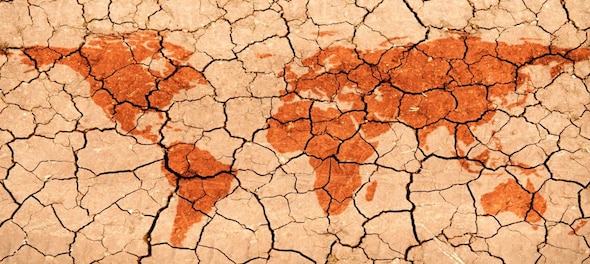
Earlier in June, Prime Minister Narendra Modi had said India is on track to achieve land degradation neutrality (LDN) as it works to restore 26 million hectares of degraded land by 2030.
“We are also working towards restoring 26 million hectares of degraded land by 2030. This would contribute to India’s commitment to achieving an additional carbon sink of 2.5 to 3 billion tonnes of carbon dioxide equivalent,” PM said. He was giving a keynote address at a United Nations dialogue on desertification, land degradation, and drought on June 15.
According to the United Nations Convention to Combat Desertification (UNCCD), if an area of productive land stays sustainable or increases in a given terrestrial landscape, it has achieved LDN.
The PM highlighted land degradation affects over two-thirds of the world today. If left unchecked, he added, it will erode our societies' foundations, economies, food security, and quality of life.
Why is tackling land degradation important?
The loss of fertile soil and its productive capacity is termed land degradation. In the past few decades, it has become a problem of global significance.
It is caused by a mix of human activities such as deforestation, overgrazing livestock, mismanagement of agricultural land, industrial activities, and extreme weather conditions.
Every year, we lose almost 24 billion tonnes of fertile soil, according to scientists at the Global Environmental Facility (GEF). To put it into perspective, less than 30 percent of the Earth's surface is land. And 20 percent of this land was degraded between 2000-15. Since then, another 5 percent has been added.
Further, UNCCD has predicted by 2050, land degradation will cost $23 trillion. To this, Asia and Africa contribute $84 billion and $65 billion per year, respectively.
The big picture and mitigation efforts
Land degradation is most common in drier areas that make up to 40 percent of the land on Earth. These areas house two billion people (almost 1/3rd of the world’s population). Additionally, land degradation affects another 1.2 billion people around the world. Such regions and people are more vulnerable to climate change and natural disasters due to extreme conditions.
African countries Niger and Kenya have the highest amount of degraded land. It contributes to the $65 billion per year cost of land degradation on the continent. Today, 168 countries are affected by land degradation.
The UNCCD adopted an LDN Target Setting Programme by the UNCCD in 2015. It nudges policymakers to counterbalance the loss in productive land with restoration by 2030.
As of today, 127 countries have committed to setting a target of restoration. 80 of these countries have already set a definite goal.
The Global Environmental Facility (GEF), UNCCD's financial mechanism, has identified areas in South America and Europe that must be managed.
Since 2006, the GEF has invested over a billion dollars in 190 projects that encourage sustainability and correct land usage.
Further, the International Fund for Agricultural Development (IFAD) has initiated a Sustainable Rural Development Program. It aims to implement strategies for the correct usage and optimum development of land.
Looking ahead
The UNCCD’s LDN program aims to create short- and medium-term goals for countries on land usage and restoration. India, amongst other nations, will work to restore the land to maintain a sustainable lifestyle. It will help India reach closer to the ‘Life on Land’ SDG.
Additionally, programs run by the GEF will give countries opportunities to meet their LDN goals while creating a sustainable urban plan for the future.
(Edited by : Yashi Gupta)
Check out our in-depth Market Coverage, Business News & get real-time Stock Market Updates on CNBC-TV18. Also, Watch our channels CNBC-TV18, CNBC Awaaz and CNBC Bajar Live on-the-go!


Interview | PM Modi targets Naveen Patnaik and BJD — asks Odisha a chance for BJP
Apr 28, 2024 7:53 PM
PM Modi says great men like Nehru and Ambedkar were against reservation based on religion
Apr 28, 2024 6:41 PM
Exclusive | Congress has turned Bengaluru from 'tech hub to tanker hub': PM Modi
Apr 28, 2024 6:18 PM
Modi Interview | Here's what the Prime Minister said on inheritance tax
Apr 28, 2024 6:05 PM

